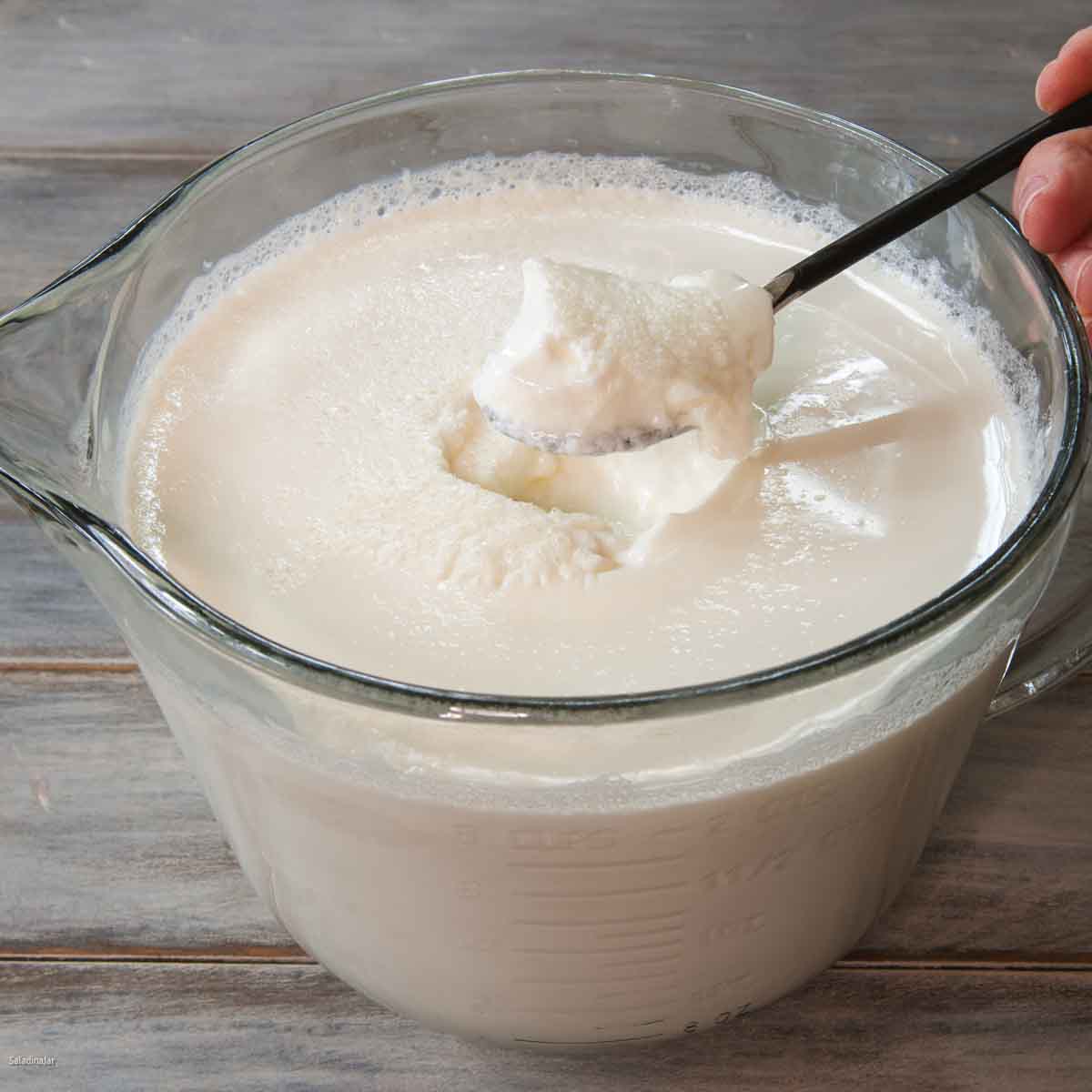How Long Should I Incubate To Make the Best Yogurt?
Sneak Preview: Many online recipes suggest incubating homemade yogurt for 8-12 hours, or longer. Does yogurt really need that much time to ferment?

As an Amazon Associate, I earn from qualifying purchases.
The short answer is: “It depends.” Not surprising, right? In fact, almost any question you ask Google about making homemade yogurt yields a variety of answers because making good yogurt is not cut and dry.
When dealing with living organisms like yogurt bacteria, where we live makes a difference in addition to the kind of milk and yogurt starters available. Add to that our individual kitchen set-ups and personal taste preferences, and it’s easy to see how things get complicated.
What follows is based on my experience gained from testing different methods for making yogurt for over 20 years. Your results may vary.
Six Factors Influence the Incubation Time for Yogurt
1) Incubation Temperature: The optimal temperature ranges between 100-110˚F (38-42˚C), in my experience. Some say you can go lower and slower while others say 108-112˚F is optimal. Warmer than 110˚F does not produce the smooth texture I prefer, although it is faster. Cooler than 100˚F takes too long. My personal preference is 105˚F.
2) Flavor Preference: For milder yogurt, a shorter incubation is better. Longer incubation results in a tangier flavor. However, too long will adversely affect the texture depending on how much starter you use.
3) Incubation System Reliability: A consistent temperature is key. This is where beginners often run into trouble. Use a quick-read thermometer to ensure the correct temperature is maintained. Check this post If you need some ideas for different ways to incubate yogurt without a yogurt maker or a low enough temperature setting on your oven.
4) Starter Culture: Time is the enemy of yogurt-making bacteria. If they don’t die of high temperatures, they will eventually die of old age. Don’t wait any longer than 7-10 days to make more yogurt when using a yogurt starter from a previous batch. (Freeze some, if necessary.) When using commercial yogurt as your starter, buy the freshest yogurt possible.
5) Starter Type: Options include store-bought plain yogurt or freeze-dried starters. The latter are more resilient but pricier. It’s advised not to use store-bought yogurt beyond 3-4 generations or batches as the results become unpredictable the more generations you travel from the original store-bought yogurt. You might get lucky and go six months, or not so lucky and get a slimy batch by the fifth generation.
6) Milk Type: (This pertains to dairy milk, only.) I prefer fresh, pasteurized milk. Use whole milk, low-fat, or skim milk. Some people even use cream. Although some brands of ultrapasteurized milk will work, others do not. Ultra-filtered milk is best for cold-start yogurt. We all have different brands and types of milk available to us, so you may need to experiment with whatever is available in your area.
Myths About Yogurt Incubation
- Thickness and Incubation Time: Longer incubation doesn’t necessarily yield thicker yogurt, although evaporation does come into play. Straining is more effective for increasing the thickness without additives. See alternatives to cheesecloth for straining yogurt HERE. Scroll down to read another trick you can try for thicker yogurt.
- Thickness and Starter Quantity: Using excessive starter can deplete the nutrient supply quickly, resulting in more whey, especially with prolonged incubation. READ MORE…
So, How Much Time Should I Incubate Yogurt?
It’s impossible to give you a specific time because of all the different factors that affect the yogurt-making process. Now that you are aware, you can observe and taste your yogurt as it incubates to discover the best timing for you.
Four hours is a good place to start.
Once you see that your yogurt has set, taste it. If you prefer a tangier flavor, extend the fermentation time, checking hourly after it sets to find your ideal taste. Be careful not to jostle the bowl, while checking.
For reference, this is what works for me.
I incubate my yogurt for 3½-4 hours (2 quarts of low-fat milk + a tablespoon of starter) because I like a mild taste. That is enough time for the yogurt mixture to set with the consistency of jello.
I prefer thick yogurt, so I strain it instead of using additives like dry milk powder or gelatin that might change the natural flavor. That’s how I make Greek yogurt and skyr.
What If My Yogurt Doesn’t Set in Four, Six, or Eight Hours?
- Use a different starter culture.
- Check the temperature of your incubation system several times to see if it is keeping your yogurt warm enough.
- Did you jostle the bowl too much while checking on the progress?
- Try a different brand and/or type of milk.
- Did you heat the milk properly and let it cool down to 105˚F before adding the yogurt culture?
If your yogurt hasn’t set in a reasonable time, try again with the same milk if it still smells good, and looks OK. Read how to recover a batch of failed yogurt here.
📌A Trick for Thicker Yogurt📌
Because we discussed yogurt thickness, here’s a tip for you to try: Some people think you get thicker yogurt by holding the 180-degree temperature of the milk after the initial heating for an additional 15-30 minutes. When I first heard this idea, I resisted it because of the extra time. However, when I figured out how to do this in a microwave oven as an extension of the heating process, it was easy to implement.
After the milk reaches 180˚F (it takes exactly 15 minutes and 30 seconds in my MW oven on 100% power), I set the oven to 20% power for another 15-30 minutes to hold that temperature. There’s no need to stir or otherwise babysit the milk.
Parting thoughts: Some people with lactose intolerance report incubating yogurt for up to 24 hours for health purposes. I have not tried this or thoroughly researched the idea, so I can’t answer questions about it. On the other hand, if you have more questions about the yogurt-making process in general, check this FAQ post or send me an email.
If you have questions or suggestions, email me privately for a quick answer: Paula at saladinajar.com. Hope to see you again soon!



Paula Rhodes, owner
As a retired home economist, I created Saladinajar.com to share my belief that you don’t have to be a chef to find joy in creating homemade food worth sharing. Bread machines (used in an unconventional way), homemade yogurt, and quick microwave recipes are my specialty.